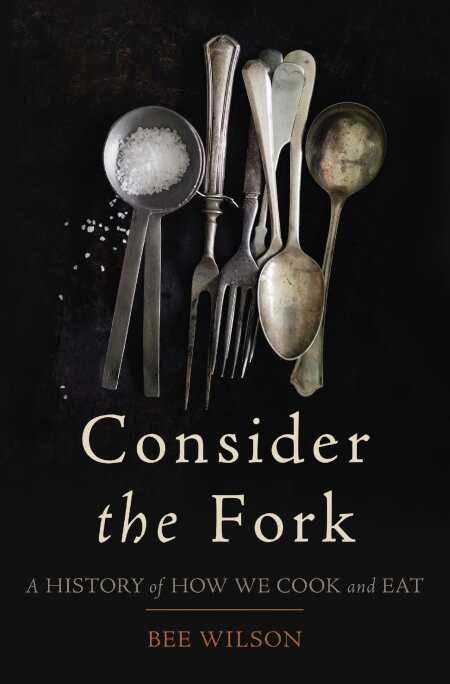Consider the Fork
A History of How We Cook and Eat
Even the most experienced home chefs may seldom think about the dangerous and painful sacrifices made by the generations of cooks who came before them, or the evolution of the processes that make food more than just a nutritional necessity. Bee Wilson aims to change all that in Consider the Fork, her illuminating exploration of the history of techniques and gadgets from the time mankind learned how to use fire in preparation for their hunting forays.
Wilson, a British food writer and author of Swindled: The Dark History of Food Fraud, from Poisoned Candy to Counterfeit Coffee and The Hive: The Story of the Honeybee and Us, does a wonderful and entertaining job of bringing these issues to light. She devotes individual chapters to the social history and evolution of tools such as the kitchen as a whole; knives, forks, and grinding devices; and the many ways fire and ice are used in food preparation. Lest North American readers think that the United States is the be-all and end-all, Wilson reminds us that nations such as China, France, Italy, and Great Britain often do things a bit differently. For example, when discussing cutting implements, she writes, “Perhaps no knife is quite as multifunctional, nor quite as essential to an entire food culture, as the Chinese tou,” followed by an enumeration of its many uses, from paper-thin slicing to dicing and even shaving (seems the tou was something of an early Swiss Army knife).
The chapter on fire marks the passage of time and techniques, beginning with the painful method of holding items over a flame with one’s hands followed by the first spit (a stick run through the meat or fish). Dangerous wood-burning mechanisms come next, then huge open stone hearths and, finally, more contained coal-, and later, gas-burning stoves.
The forks, spoons, knives, and chopsticks on which Wilson expounds are not merely functional. Their meanings all transcend the act of transporting food from plate or dish (about which she also goes into great detail concerning practicality and design over the millennia) to palate. For instance, Wilson tells us that in the early Middle Ages, a knife was perhaps a person’s most prized possession; she compares it to the modern-day wristwatch, which often represents the owner’s personality and social status.
Measurements are treated with scientific exactitude: “Good cooking is a chemical undertaking. The difference between a truly great dinner and an indifferent one might be thirty seconds and one-quarter of a teaspoonful of salt,” she claims (which explains why a dish might seem so different than it is depicted in a recipe).
It’s quite circular: new cooking methods beget the tools that are needed, as well as the food that is to be prepared. Think of how the microwave has become practically a staple of the modern kitchen, as indispensable an appliance for most as the stove or refrigerator.
Like putting a meal together, Consider the Fork assembles the various ingredients that might not seem like much as individual components but, when gathered, make for a wonderful ragout.
Reviewed by
Ron Kaplan
Disclosure: This article is not an endorsement, but a review. The publisher of this book provided free copies of the book to have their book reviewed by a professional reviewer. No fee was paid by the publisher for this review. Foreword Reviews only recommends books that we love. Foreword Magazine, Inc. is disclosing this in accordance with the Federal Trade Commission’s 16 CFR, Part 255.

